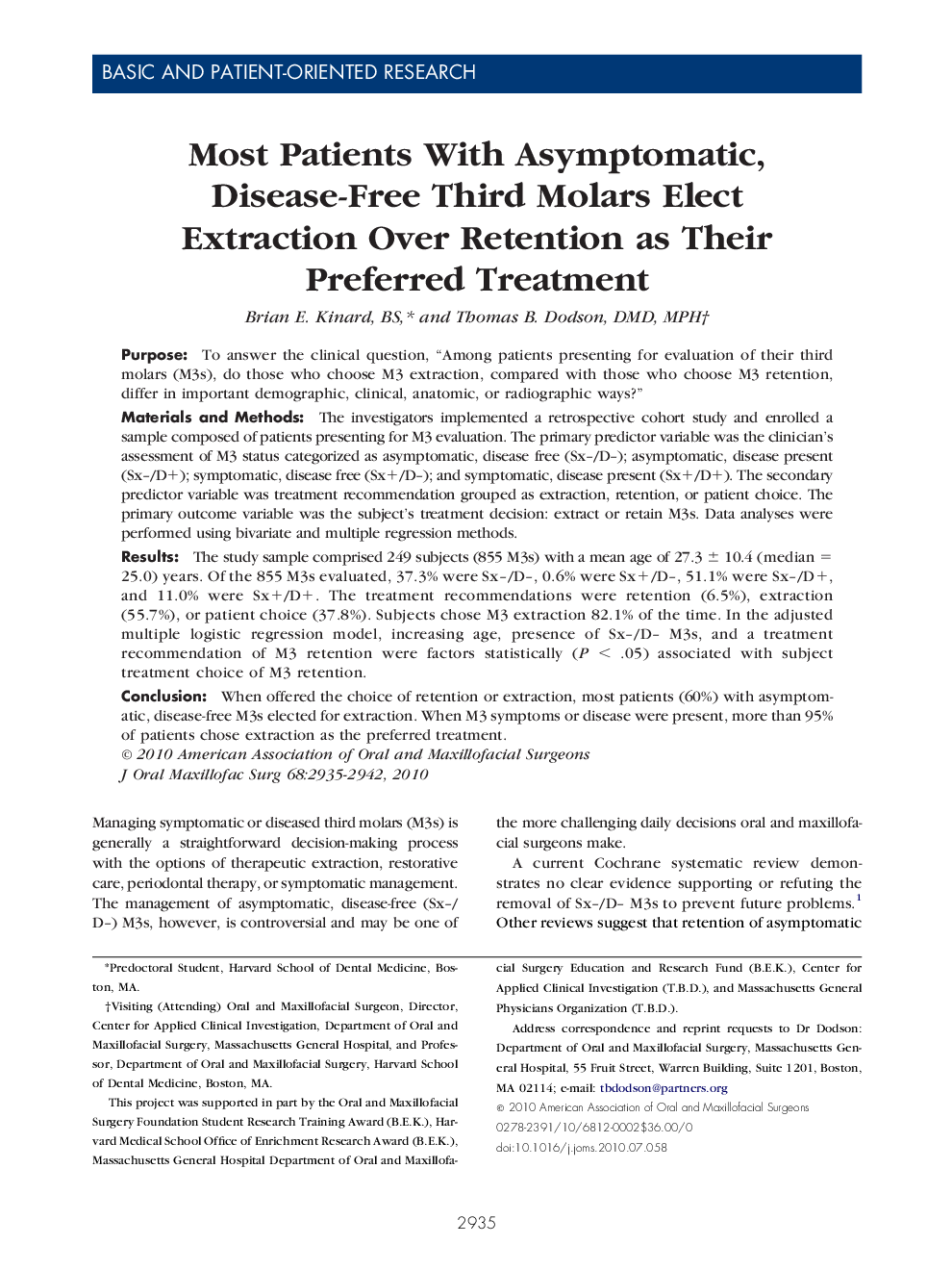| کد مقاله | کد نشریه | سال انتشار | مقاله انگلیسی | نسخه تمام متن |
|---|---|---|---|---|
| 3157014 | 1198155 | 2010 | 8 صفحه PDF | دانلود رایگان |

PurposeTo answer the clinical question, “Among patients presenting for evaluation of their third molars (M3s), do those who choose M3 extraction, compared with those who choose M3 retention, differ in important demographic, clinical, anatomic, or radiographic ways?”Materials and MethodsThe investigators implemented a retrospective cohort study and enrolled a sample composed of patients presenting for M3 evaluation. The primary predictor variable was the clinician's assessment of M3 status categorized as asymptomatic, disease free (Sx–/D–); asymptomatic, disease present (Sx–/D+); symptomatic, disease free (Sx+/D–); and symptomatic, disease present (Sx+/D+). The secondary predictor variable was treatment recommendation grouped as extraction, retention, or patient choice. The primary outcome variable was the subject's treatment decision: extract or retain M3s. Data analyses were performed using bivariate and multiple regression methods.ResultsThe study sample comprised 249 subjects (855 M3s) with a mean age of 27.3 ± 10.4 (median = 25.0) years. Of the 855 M3s evaluated, 37.3% were Sx–/D–, 0.6% were Sx+/D–, 51.1% were Sx–/D+, and 11.0% were Sx+/D+. The treatment recommendations were retention (6.5%), extraction (55.7%), or patient choice (37.8%). Subjects chose M3 extraction 82.1% of the time. In the adjusted multiple logistic regression model, increasing age, presence of Sx–/D– M3s, and a treatment recommendation of M3 retention were factors statistically (P < .05) associated with subject treatment choice of M3 retention.ConclusionWhen offered the choice of retention or extraction, most patients (60%) with asymptomatic, disease-free M3s elected for extraction. When M3 symptoms or disease were present, more than 95% of patients chose extraction as the preferred treatment.
Journal: Journal of Oral and Maxillofacial Surgery - Volume 68, Issue 12, December 2010, Pages 2935–2942